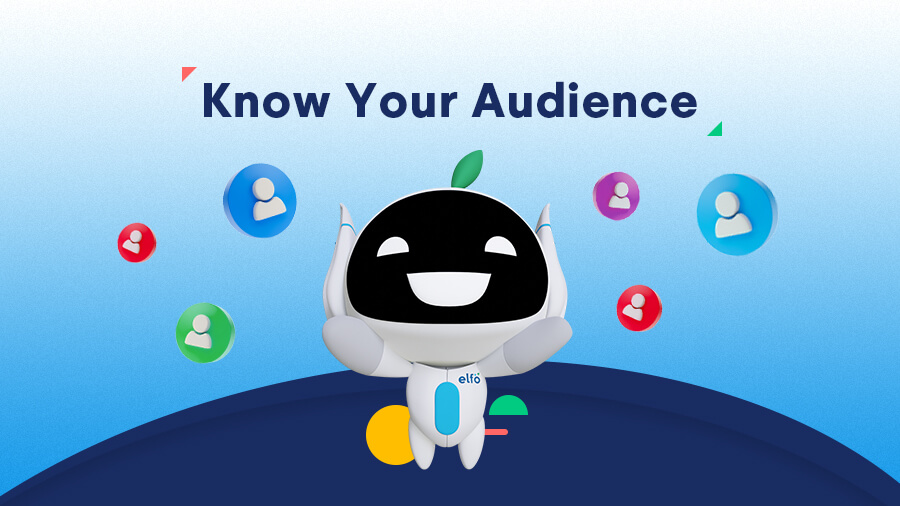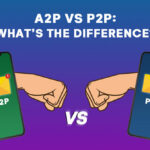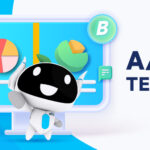Content Marketing, Email Marketing, Insights, Social Media
elfo BlogAudience Segmentation: The Key to Enhancing Your Inbound Marketing Strategy
- By elfo

Are you tired of sending out generic marketing campaigns that fail to engage your target audience? Well, it’s time to say goodbye to mediocre results and hello to an exciting new way of enhancing your inbound marketing strategy – audience segmentation!
In this blog post, we’ll be exploring the power of audience segmentation in enhancing your inbound marketing efforts. So, grab a coffee, get comfortable, and let’s dive into the world of audience segmentation together!
Table of Contents
ToggleDefinition of Audience Segmentation
Audience segmentation is the process of dividing your target audience into smaller, more defined groups based on common characteristics such as age, gender, behavior, and interests. By doing so, you can tailor your marketing messages to each segment, making them more relevant and effective.
Importance of Audience Segmentation in Inbound Marketing
Audience segmentation is a crucial component of inbound marketing, and here’s why:
- Improves Relevance and Effectiveness of Marketing Messages: By dividing your audience into smaller, more defined groups, you can tailor your marketing messages to the specific needs and preferences of each segment. This leads to higher engagement and conversions as the messages are more relevant to the audience.
- Increases Personalization: Personalization is a key aspect of inbound marketing, and audience segmentation helps you achieve it. By understanding the unique characteristics of each segment, you can craft personalized messages that resonate with each group.
- Increases Efficiency: Audience segmentation enables you to focus your marketing efforts on the segments that are most likely to convert. This saves time and resources and helps you get the most out of your inbound marketing campaigns.
- Enhances Customer Experience: By providing relevant and targeted content to each segment, you improve the overall customer experience. This leads to increased brand loyalty and advocacy, which can help you attract new customers and drive growth.
Improves Data Insights: By analyzing the performance of each segment, you can gain valuable insights into the behavior and preferences of your target audience. This information can help you make data-driven decisions about your marketing strategy and refine your audience segments over time.
Understanding Your Target Audience

Collecting and Analyzing Data on Your Target Audience
To effectively segment your audience, you need to understand your target audience. The first step in this process is collecting and analyzing data on your audience. There are a variety of methods you can use to gather this information, including:
- Surveys: You can use surveys to gather data on the demographics, interests, and behaviors of your target audience. You can use this information to create segments based on common characteristics.
- Analytics: Analyzing website and social media analytics can give you a wealth of information about your target audience. For example, you can see which pages and content are most popular among your audience, which can help you determine their interests and preferences.
- Customer Feedback: Asking for customer feedback can provide valuable insights into the needs and preferences of your target audience. This information can help you create segments and tailor your marketing messages accordingly.
Determining Common Characteristics Among Audience Segments
Once you have collected data on your target audience, the next step is to determine common characteristics among your audience segments. You might want to think about the following characteristics:
- Demographics: Age, gender, location, and income are all demographic characteristics that can be used to create audience segments.
- Interests and Behaviors: Understanding the interests and behaviors of your target audience can help you create segments based on common activities, hobbies, and habits.
- Pain Points: Identifying the pain points and challenges that your target audience faces can help you create segments based on the solutions they are seeking.
- Customer Journey: Understanding the customer journey can help you create segments based on the stage of the journey that each customer is in. For example, you might have a segment for customers who are just starting to consider your product, and another segment for customers who are ready to make a purchase.
How to Use Data to Create Audience Personas
Once you have identified the common characteristics among your audience segments, the next step is to use the data to create audience personas. An audience persona is a fictional representation of a specific segment of your target audience. It includes demographic information, interests, behaviors, pain points, and goals.
Creating audience personas allows you to understand your target audience on a deeper level and helps you create marketing messages that resonate with each segment. By using data to create audience personas, you can ensure that your marketing messages are relevant, targeted, and effective.
Creating Segments

Types of Audience Segments
There are many different types of audience segments, but here are a few of the most common:
- Demographic Segments: Demographic segments are based on demographic data such as age, gender, location, and income.
- Behavioral Segments: Behavioral segments are based on behaviors and actions, such as the pages a customer visits on your website or the products they have purchased in the past.
- Psychographic Segments: Psychographic segments are based on personality, values, and lifestyle.
- Firmographic Segments: Firmographic segments are based on firmographic data such as size of the company, industry, and location.
How to Create Meaningful and Relevant Segments
Once you have considered the key factors and determined the types of segments you want to create, the next step is to create meaningful and relevant segments. Here are some suggestions to get you started:
- Start Small: It can be tempting to create many different segments, but it’s better to start small and focus on a few well-defined segments.
- Focus on Relevance: Make sure your segments are relevant to your target audience and their needs. This will ensure that your marketing messages resonate with each segment.
- Refine Your Segments Over Time: Your target audience and their needs may change over time, so it’s important to regularly review your segments and refine them as needed.
Tailoring Your Marketing Messages

Crafting Targeted Messages for Each Segment
Once you have a good understanding of the needs and preferences of each segment, the next step is to craft targeted messages for each segment. Here are a few tips to help you create effective targeted messages:
- Personalize Your Messages: Personalizing your messages can help you create messages that resonate with each segment. This can be as simple as addressing each segment by name, or as complex as creating custom messages for each segment.
- Focus on Benefits: When creating your messages, focus on the benefits that your product or service provides to each segment. This will help you create messages that resonate with each segment and motivate them to take action.
- Use Data: Use data to support your messaging decisions. This will help you ensure that your messages are relevant and effective.
How to Measure the Success of Targeted Messages
Once you have created your targeted messages, the next step is to measure the success of your messages. Here are a few metrics that you can use to measure the success of your messages:
- Conversion Rates: Conversion rates are a good way to measure the success of your targeted messages. You can track conversion rates for each segment and compare them to see which messages are most effective.
- Engagement Rates: Engagement rates are another way to measure the success of your targeted messages. You can track engagement rates for each segment and compare them to see which messages are resonating with your target audience.
- Customer Feedback: Customer feedback can be a valuable tool for measuring the success of your targeted messages. You can ask customers for feedback on your messages, and use this information to refine your messages and make them more effective.
Best Practices for Audience Segmentation

Importance of Regular Analysis and Adjustment
Audience segmentation is not a one-time effort, but rather a continuous process. Regular analysis and adjustment of your segments is important to ensure that your inbound marketing efforts remain effective over time. Here are a few reasons why regular analysis and adjustment is important:
- Changing Needs and Preferences: The needs and preferences of your target audience can change over time. Regular analysis and adjustment of your segments can help you stay up-to-date with the changing needs and preferences of your target audience.
- Improved Segmentation: Regular analysis and adjustment can help you refine your segments, making them more meaningful and relevant. This will help you create targeted messages that resonate better with your target audience.
How to Test and Refine Your Segments
Testing and refining your segments is an important part of the audience segmentation process. Here are 2 ways to test and refine your segments:
- A/B Testing: A/B testing is a powerful tool for testing and refining your segments. You can use A/B testing to compare the performance of different segments and make informed decisions about which segments to keep and which to eliminate.
- Analytics: Analytics can help you test and refine your segments by providing data on the performance of each segment. You can use this information to make informed decisions about which segments to keep and which to eliminate.
Conclusion
Audience segmentation is a powerful tool that can significantly enhance your inbound marketing efforts. By providing relevant and targeted content to each segment, you can improve the customer experience, increase conversions, and drive growth for your business.
Take your business to the next level with elfo’s Email Marketing Management Services and Social Media Management Services. Our team of experts will help you connect with your audience and achieve your marketing goals through customized strategies and advanced technology.
Contact us today to schedule a free consultation and find out how we can help you succeed online!




